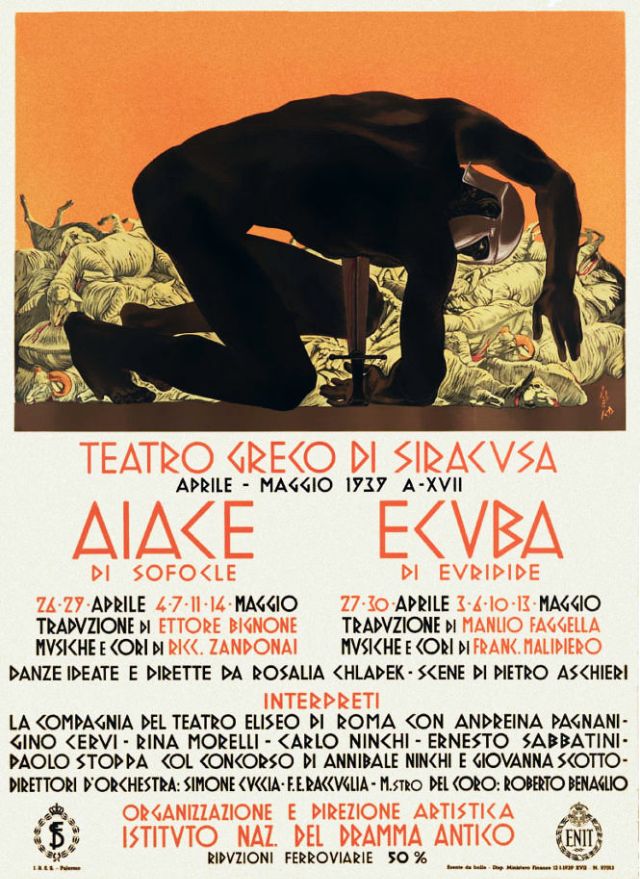Fine di Secolo, Acqua Progressiva Insuperabile, circa 1900
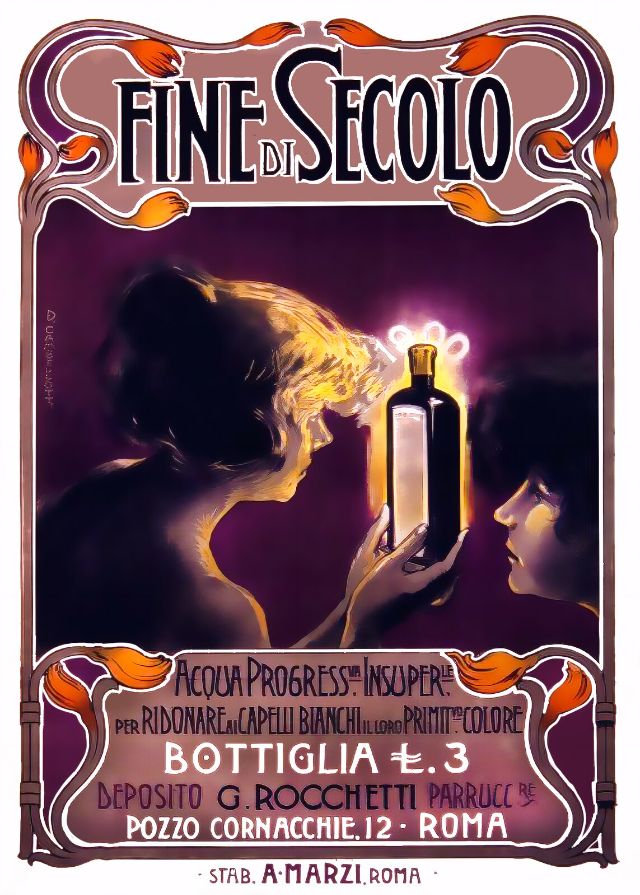
Italian applied artist, illustrator, painter, sculptor, and designer Duilio Cambellotti (1876–1960) was involved in the Arts & Crafts and Art Nouveau movements, and his impact extended beyond the aesthetic and political to the social and political. His fidelity to agrarian motifs and versatility across a broad spectrum of visual and design disciplines have earned him recognition.
h/t: vintag.es
“The Suppressed Contrade”, 1907
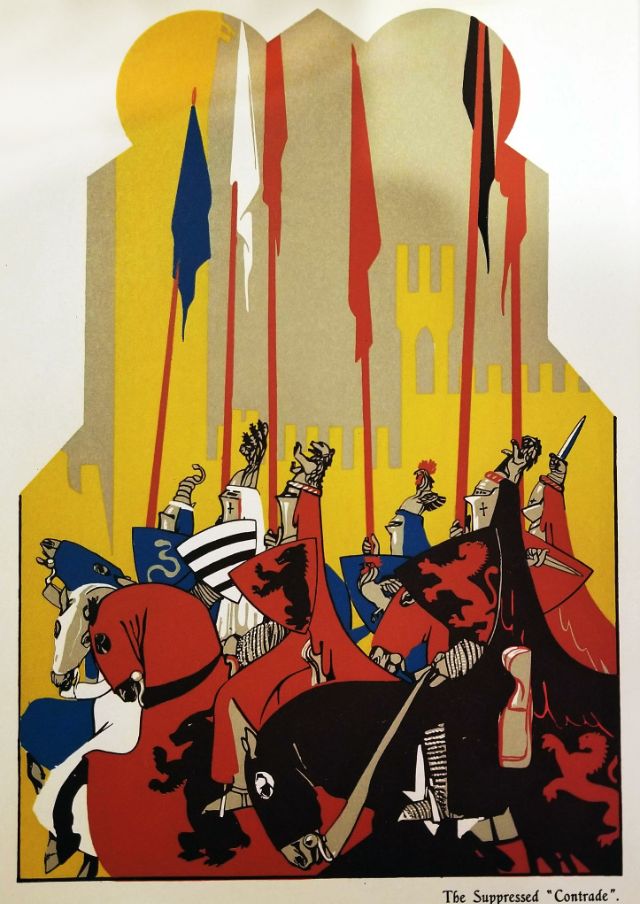
Cambellotti maintained an awareness of the societal implications of embellishment throughout his artistic trajectory. Under the influence of William Morris, he emerged as a prominent figure among artists striving to preserve an intellectual and aesthetic rapport with the organic immediacy of style embodied in conventional handmade items and traditional pictorial coherence, in contrast to the machine-like images and sleek surfaces that inspired him.
“Pons Sublicius”, 1910-11
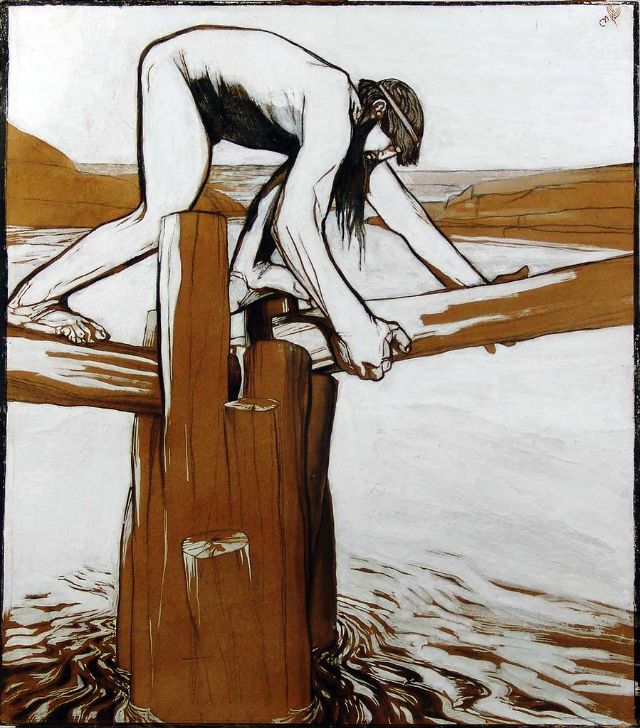
Rome 1911, Exposition Internationale, 1911
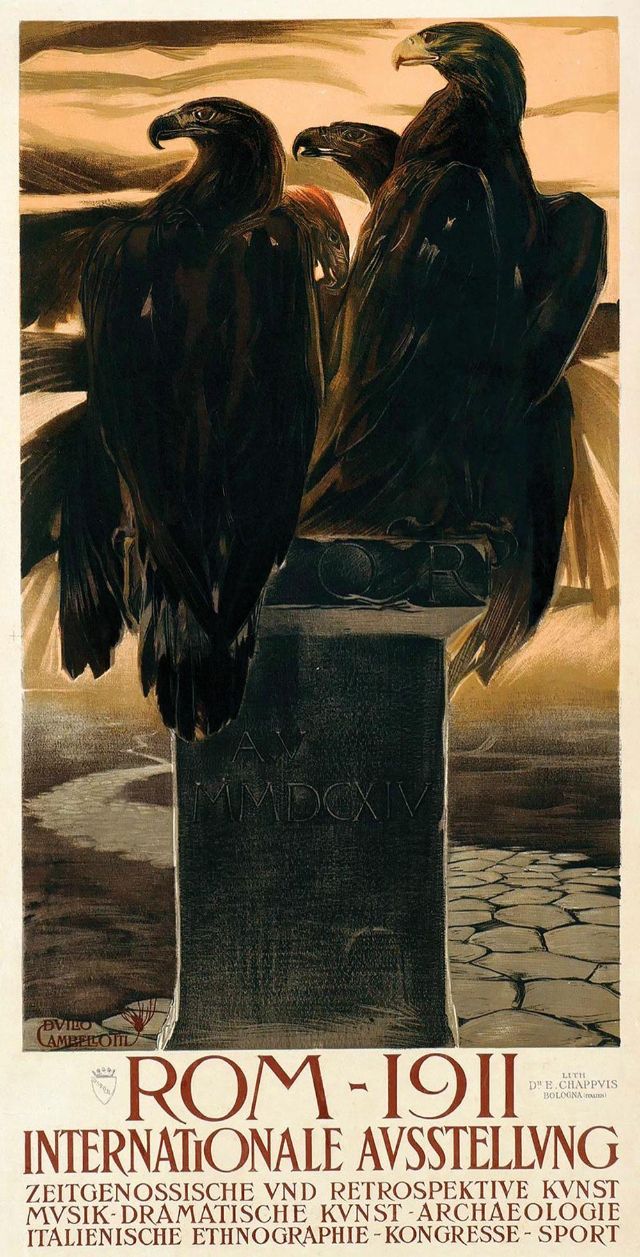
“Storia di Aladino e della lampada magica” from The Arabian Nights, circa 1912
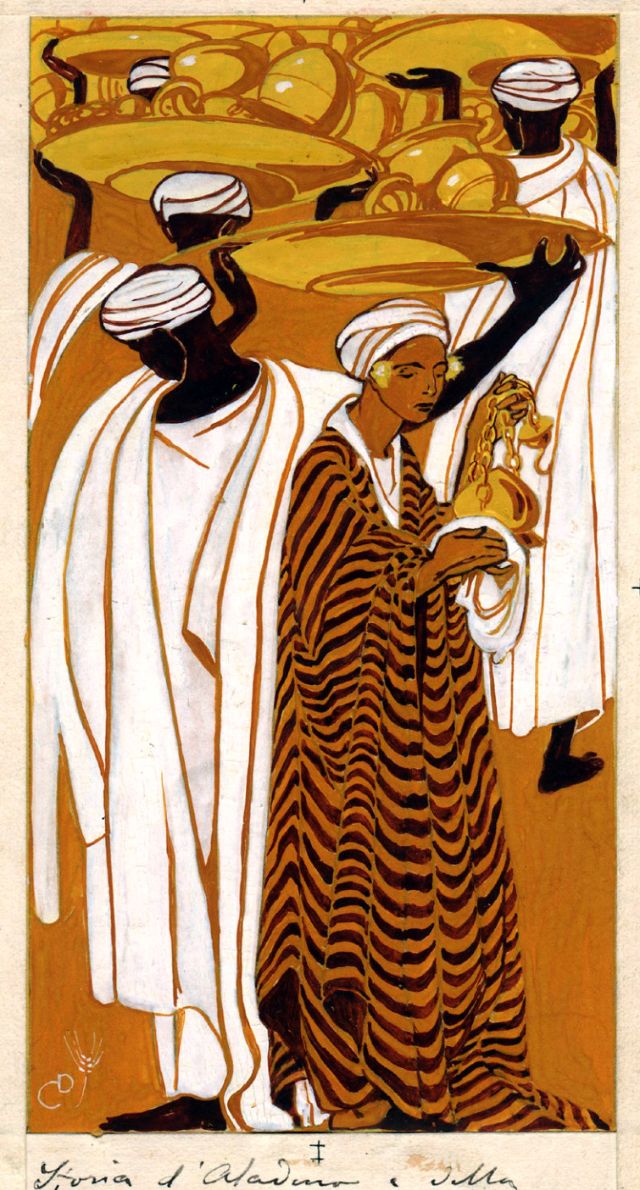
“Storia di Aladino e della lampada magica” from The Arabian Nights, circa 1912
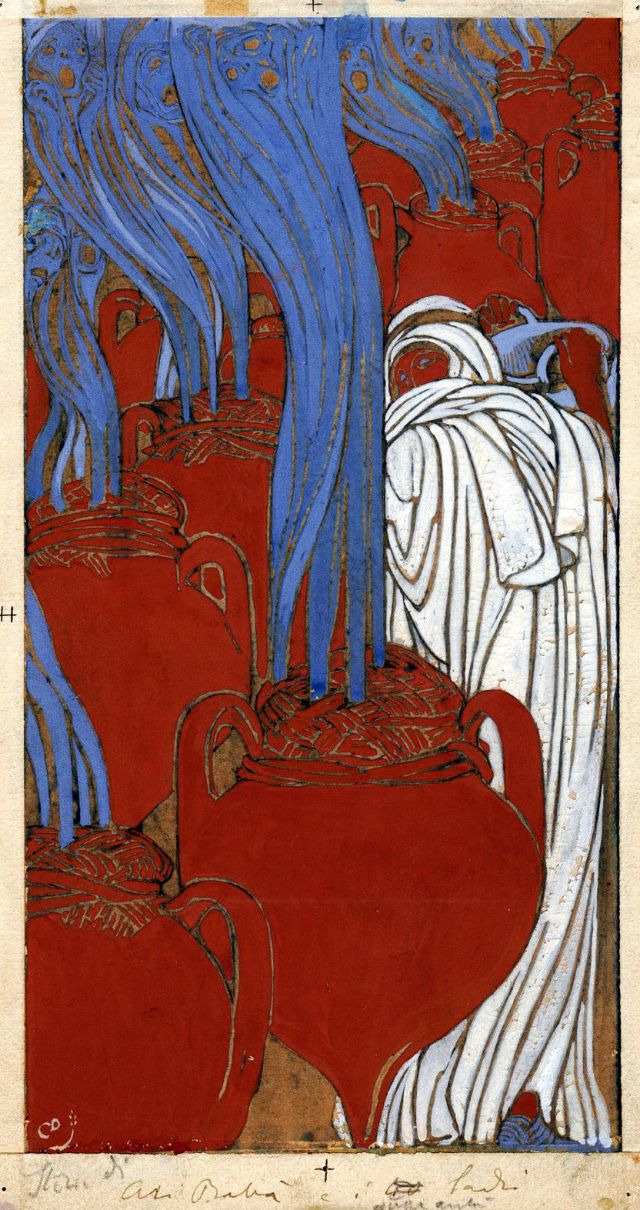
Illustration for The Arabian Nights, “The Story of the Fisherman”, circa 1912
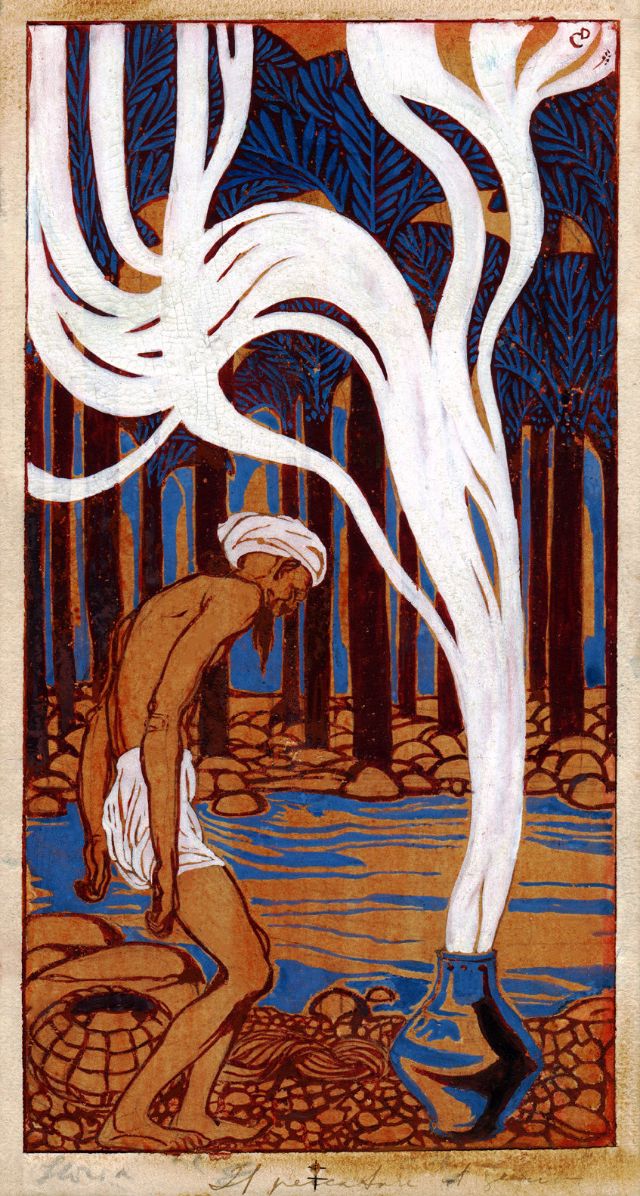
La storia del principe Amed e della Fata Peri-Banu, 1912

La storia del secondo Calender, Le mille e una notte, 1912
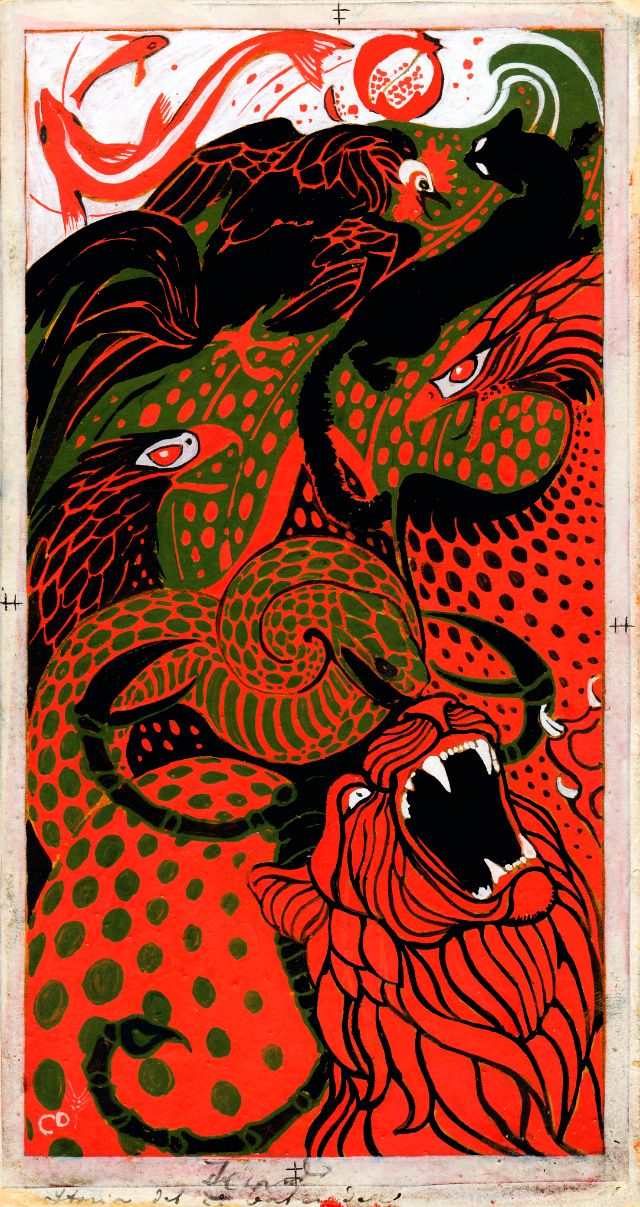
Storia del Cavallo Incantato (maquette), circa 1912

Illustration for “Mille et une nuits”, 1913
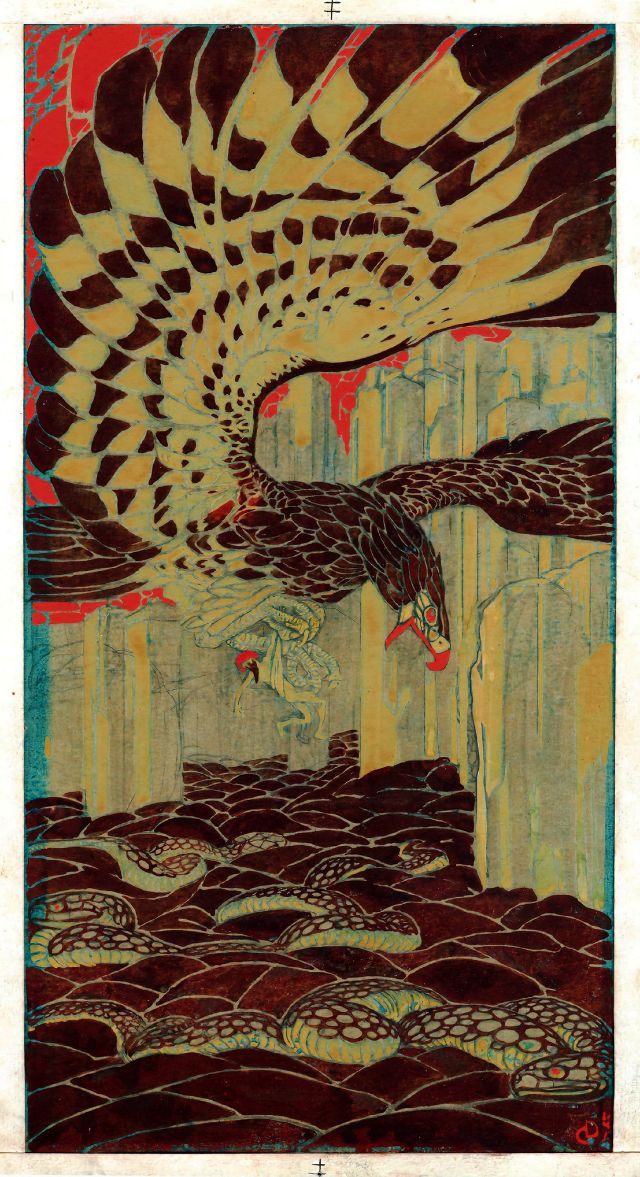
Comune di Firenze, Premio di 2º Grado, I racconti della foresta e del mare, circa 1915
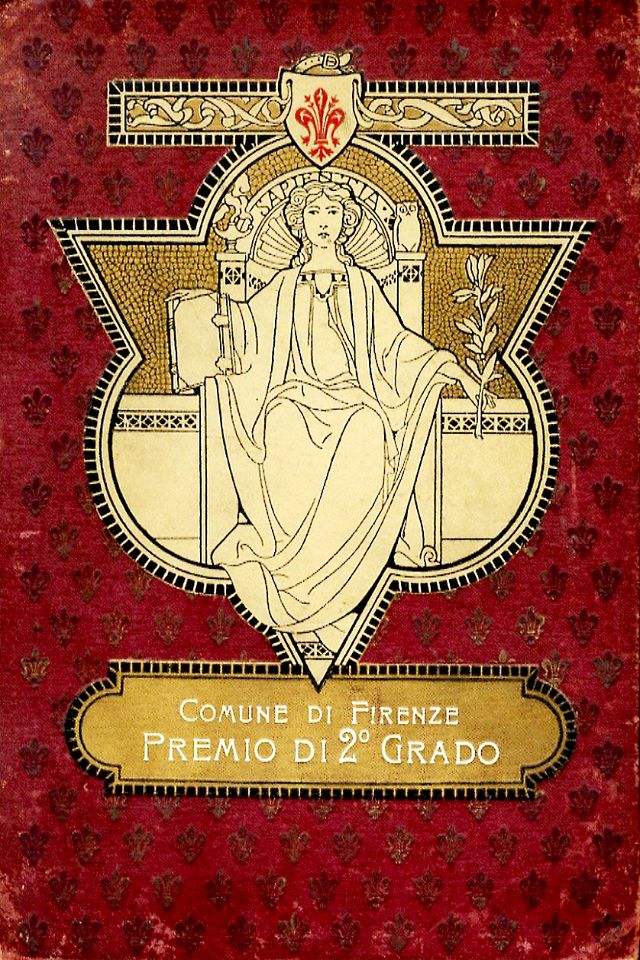
Teatro Greco di Siracusa, Istituto Nazionale del Dramma Antico, 1918
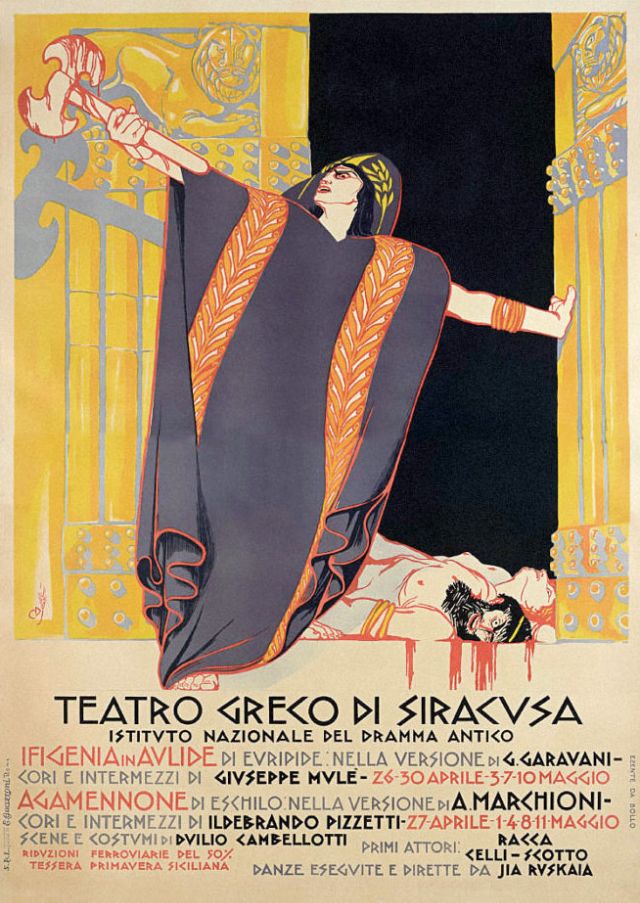
Dante, circa 1920
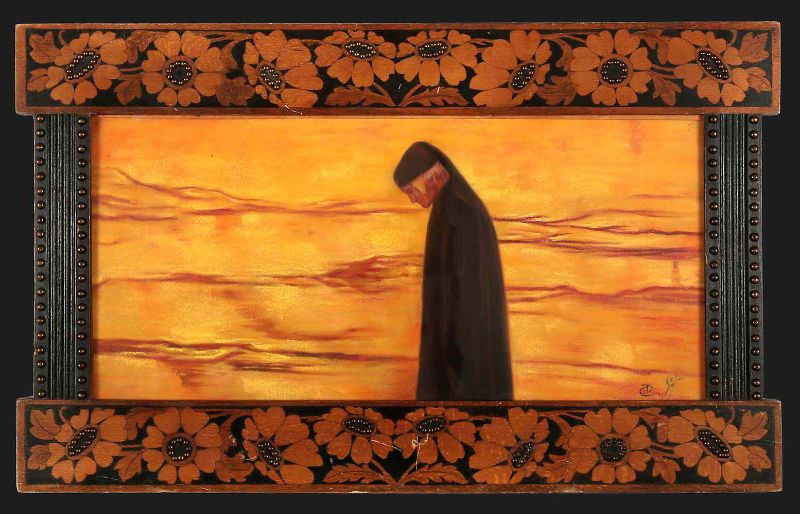
Teatro Greco di Siracursa, “Coefore” di Eschilo, 1921
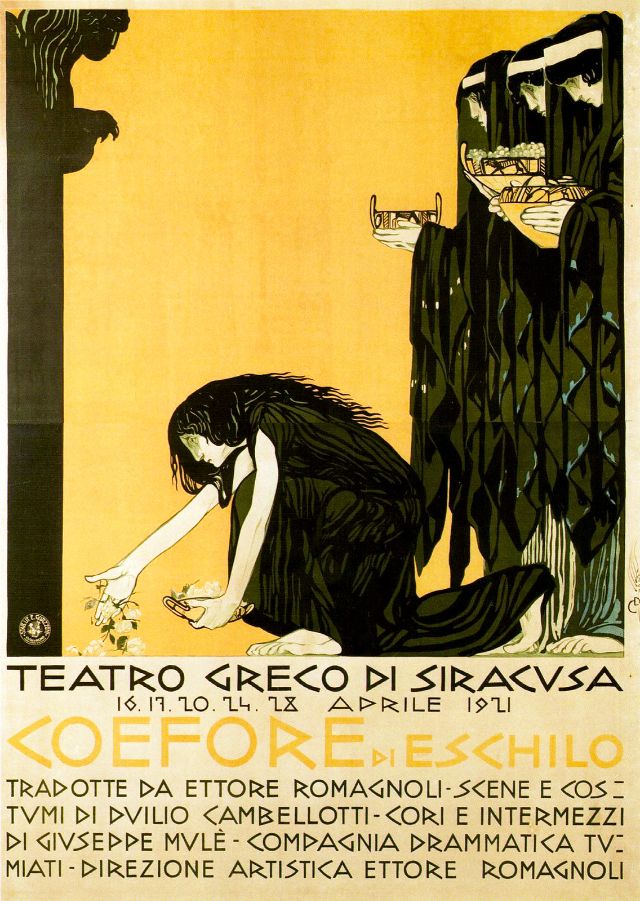
Teatro Greco di Siracusa, Baccanti di Euripide, 1922
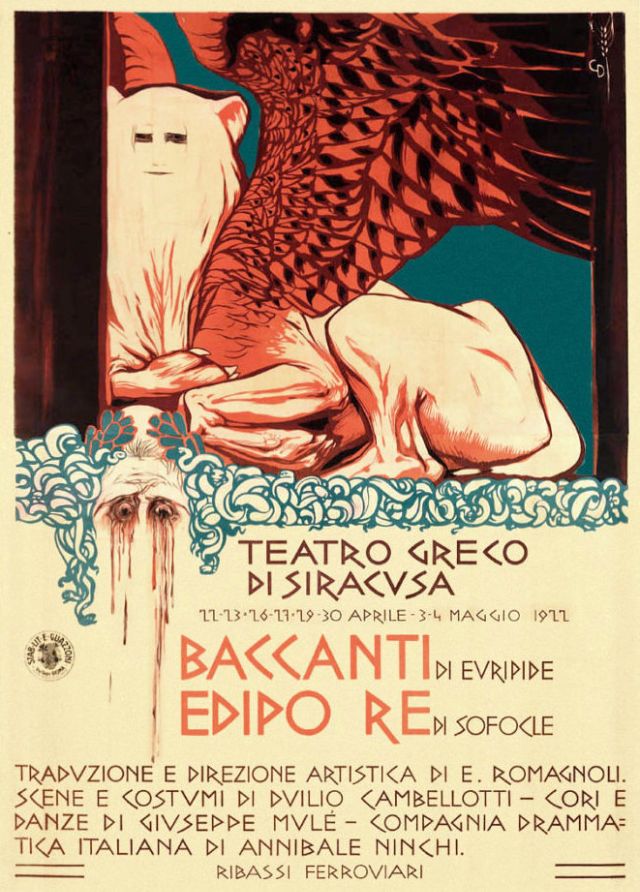
I Sette a Tebe, Antigone, 1924
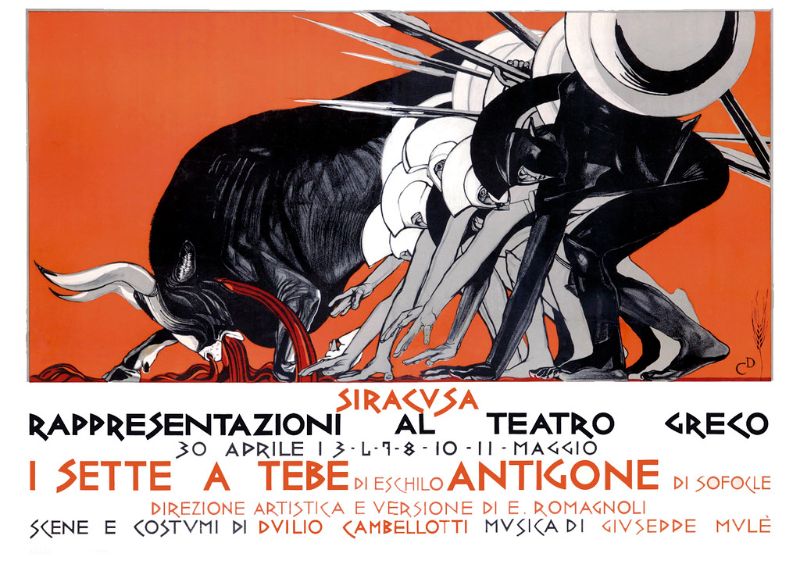
Primavera Siciliana, 1927
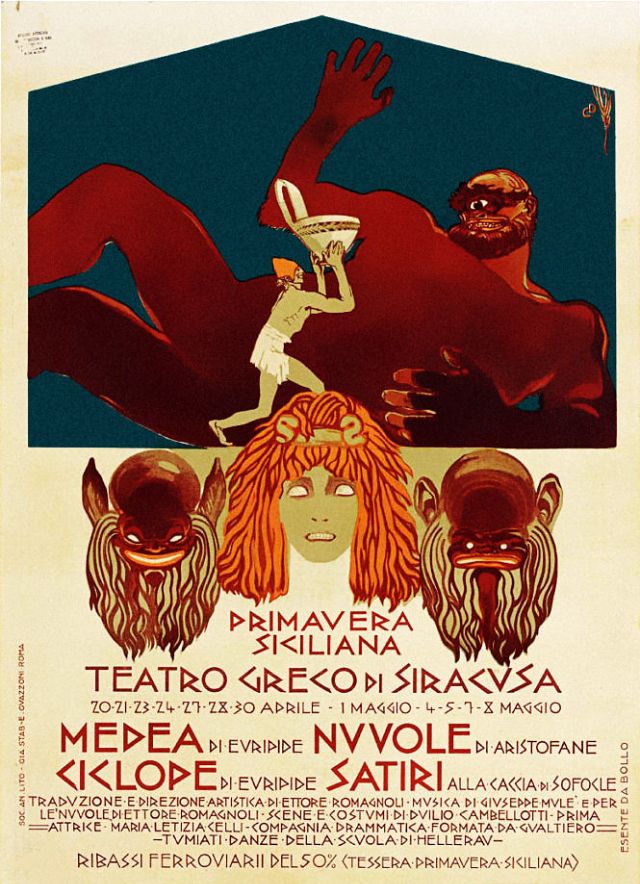
Primera Classica nei Templi di Agrigento, May 1928

Spettacoli Classici al Teatro Romano di Ostia, circa 1928
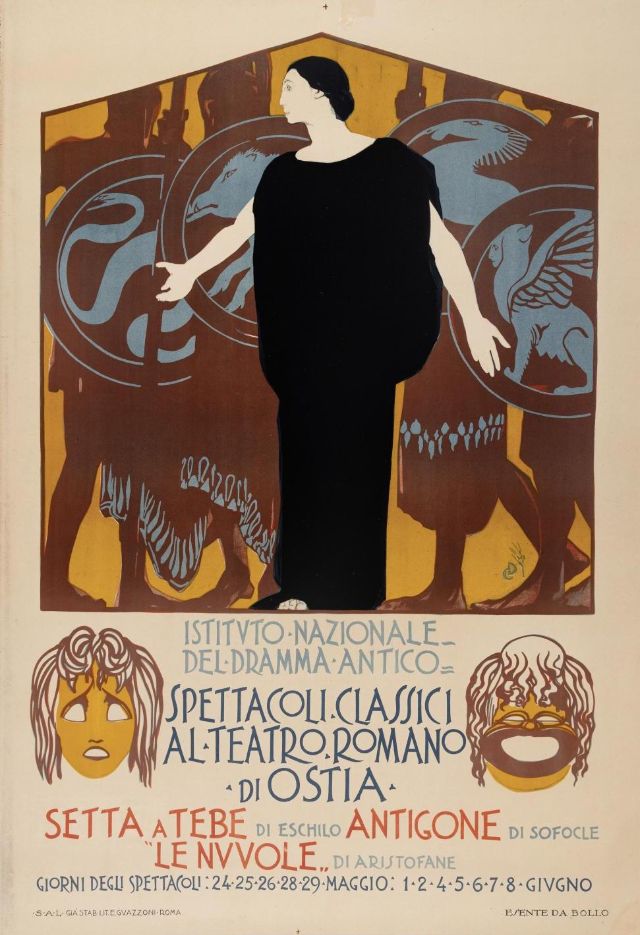
Le Contrade, L’Aquila, 1932
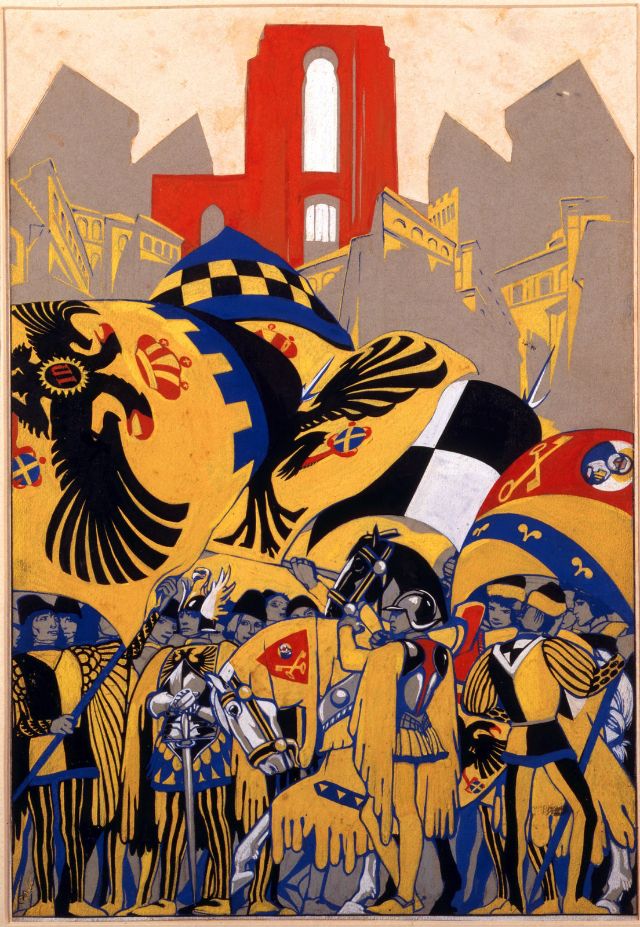
Nobile Contrada del Nicchio I, 1932
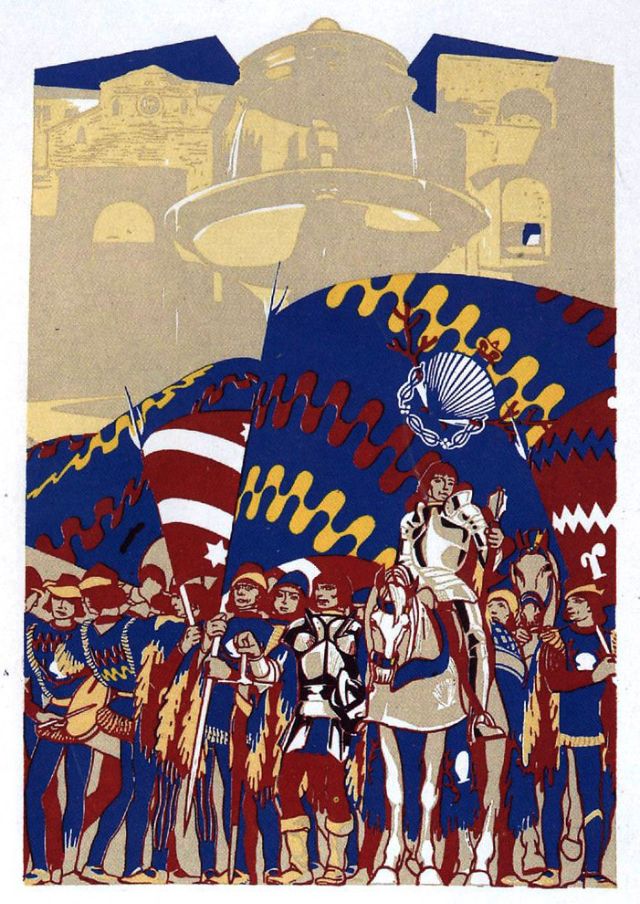
Cambellotti Rappresentazioni Classiche, Teatro Greco di Siracusa, 1933
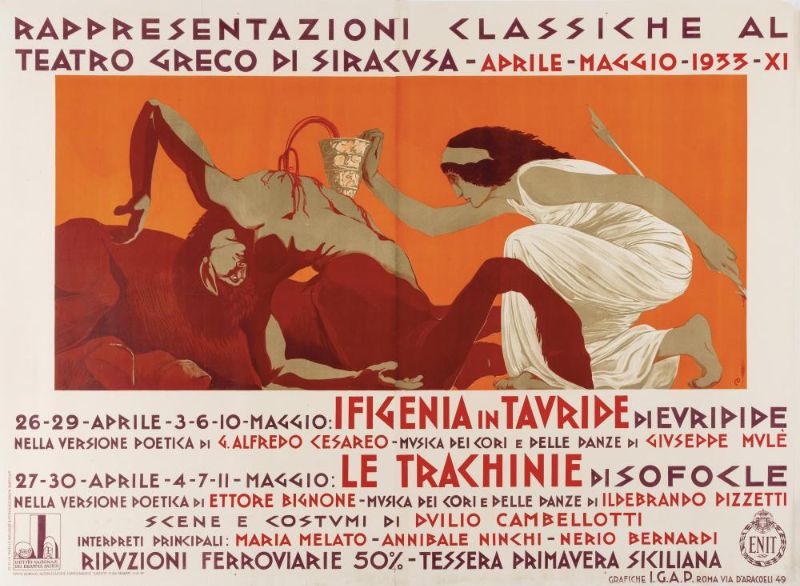
La storia delle tre sorelle, circa 1933
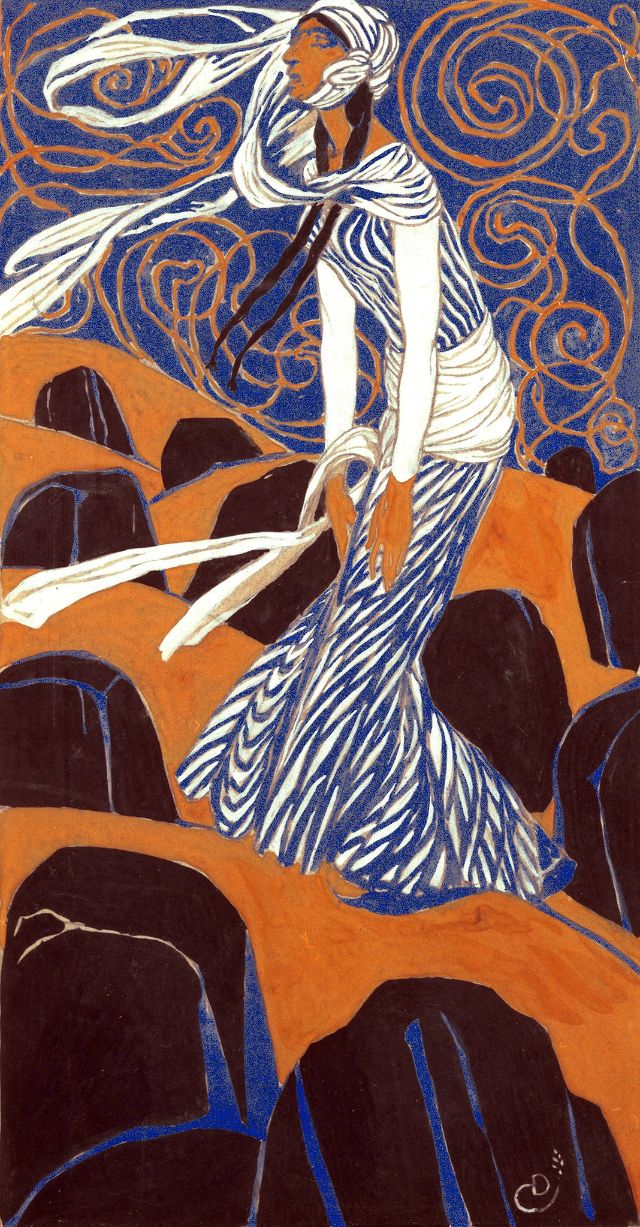
Teatro Romano d’Ostia, Istituto Nazionale del Dramma Antico, June 1938
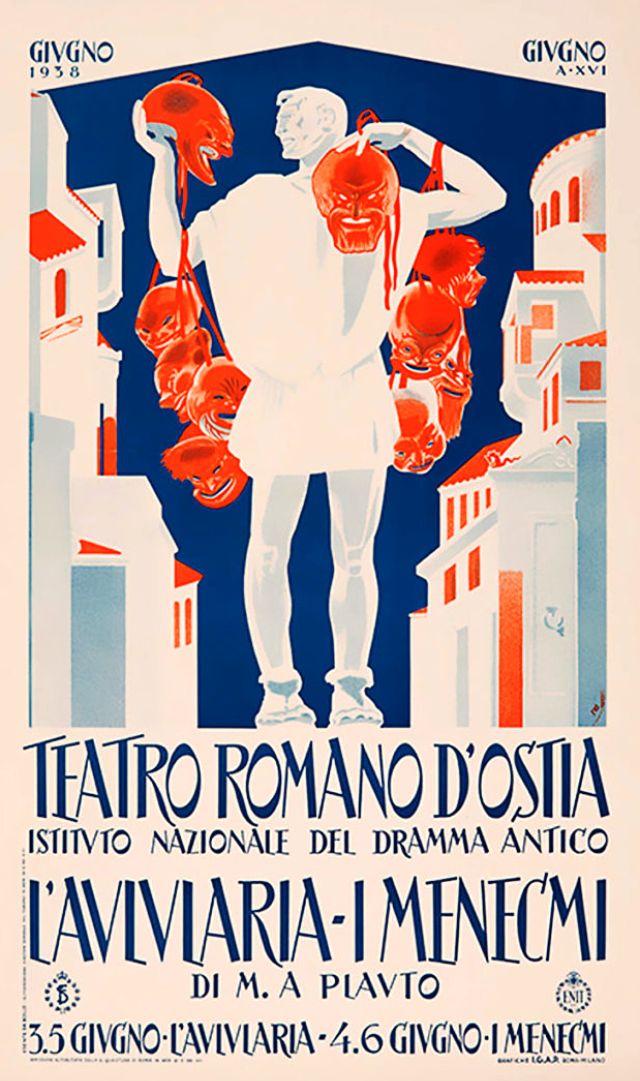
Teatro Greco di Siracusa, 1939
